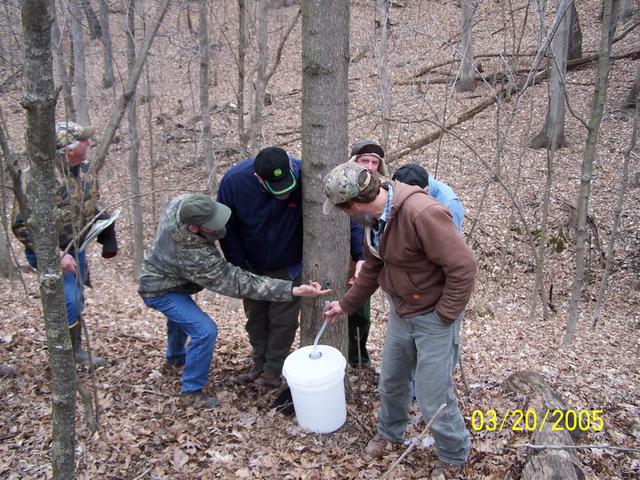The Significance of Private Forests in the US

OVERVIEW
The significance of Private Forests in the U.S. investigates the history of private forests and the values these lands have to the United States. Students will also examine family forests in America, and take a closer look at the challenges facing private forestland owners.
Image Caption: Private Forestland Tour: Maple Syrup Days, March 20, 2005, located on Jack Wohlstadter's Tree Farm in Illinois. (Photo by Jack Wohlstader)
OBJECTIVE
- The students will conduct historical research; obtaining historical data.
(Historical Thinking, Standard: 4B) - The students study the economic boom and social transformation of postwar United States.
(U.S. History - Era 9, Standard 1) - Students examine economic, social, and cultural developments in contemporary United State.
(U.S. History - Era 10, Standard 2) - The student will utilize visual and mathematical data presented in charts.
(Historical Comprehension, Standard 2) - Students use data and apply skills in analyzing human behavior in relation to its physical and cultural environment.
(Standard 3: People, Places, and Environments)
Social Studies
LESSON PLAN
Teacher Preparation:
Download and Print: Module 10 Teacher and Student PDFs using Adobe Acrobat.
For Day 1 activity: Make an overhead copy of the Ecosystem Service chart. Make copies of the essay for each student in your classroom. Next make copies of Worksheet 1 and Worksheet 2 for each student.
Day 2 activity: Make copies of Worksheet 3 for each student in the class. Read the Worksheet 3 Teacher instructions and prepare for class discussion. You may want to set aside computer class time for this worksheet. Make the bar graphs using Excel.
Day 3 activity: Make copies of "Family Forest Story -- 'Tree Farming' in the U.S.," Worksheet 4 Interview: Student Directions, Interview: Student Checklist, and Interview: Permission Form for each student. Read the Teacher Instructions and be sure to read the "things to consider" section. (You may want to make a list of a few local tree farmers or private forestland owners and their contact information to give to the students.)

